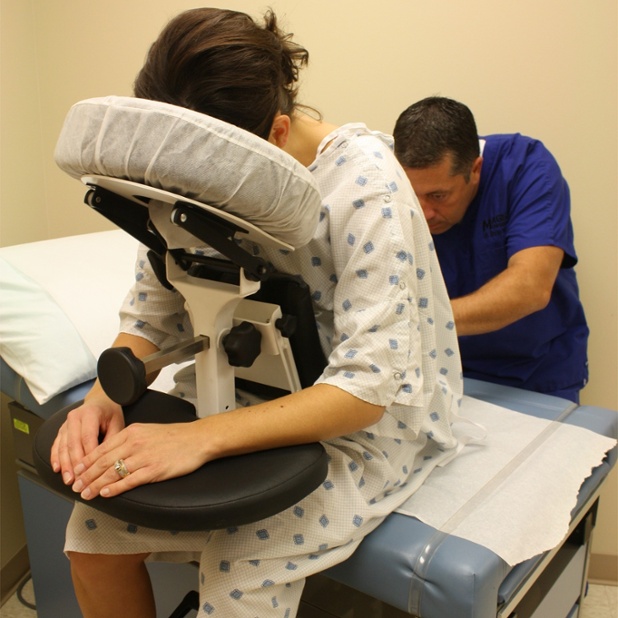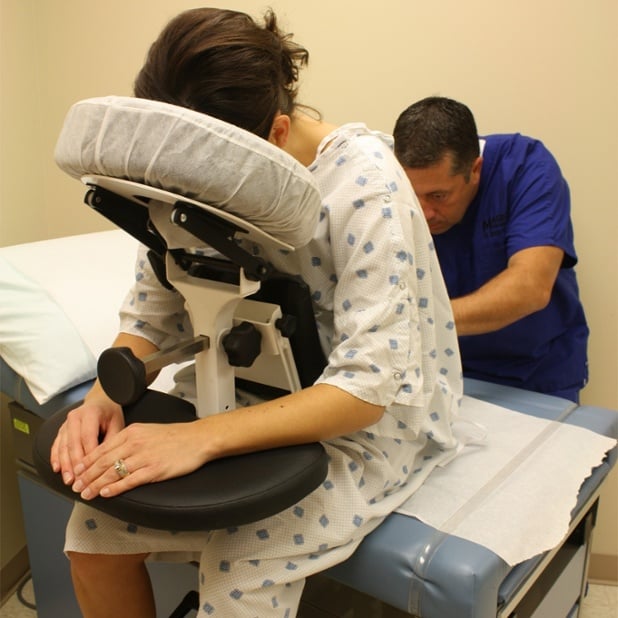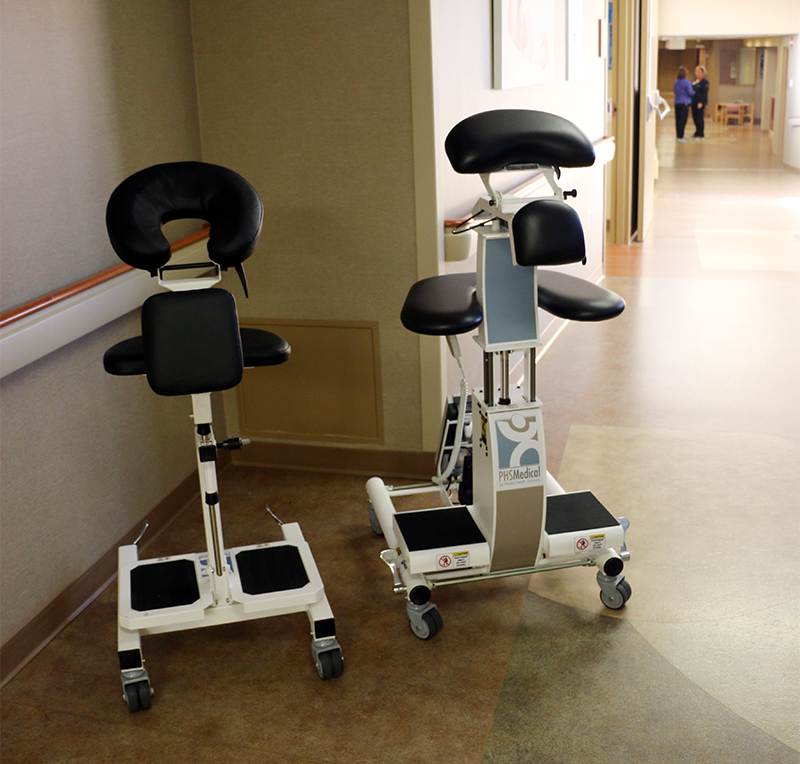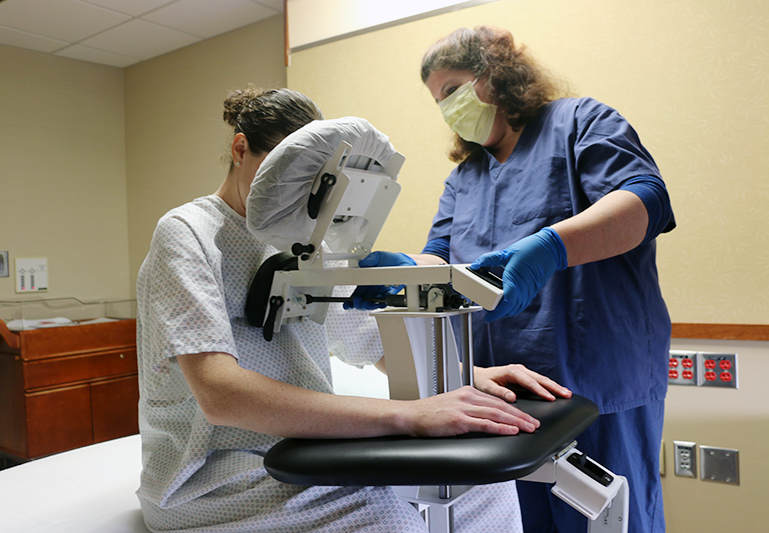Nearly two decades ago, an anesthesiologist saw a massage chair and came up with a revolutionary idea: "Could such a chair be the basis for a comfortable, stable, and accurate positioning device for epidurals and other spinal procedures?" The answer was a resounding, "Yes."
The result was the creation of the Epidural Positioning Device or EPD which was designed by an anesthesiologist for anesthesiologists. The EPD was specifically developed for use in labor and delivery suites, operating rooms, pain management centers and outpatient surgical centers to assist with correct patient positioning during epidural procedures and other central anesthetic techniques. It effectively reduces patient risk while increasing patient safety, and it also helps with positioning obstetrics, obese patients, and during Thoracentesis procedures.
PHS Medical offers two versions of the Epidural Positioning Device including a manual and an electric option. A key difference in the manual version features a spring plunger that allows the operator to manually adjust the positioning for the midsection with a separate locking clamp for the foot rest. In contrast, the electric version uses an electronic controller to adjust the midsection and foot rest for each patient allowing for more distance between the patient and nurse or caregiver. In addition, the electric version also has a more easily adjustable face rest, and a smaller chest support piece that allows more space for the patient's abdomen, and it features a solid section arm rest that flips up for easy cleaning.
Proper positioning is essential, and it can be difficult for a variety of reasons. The Epidural Positioning Device eliminates many common safety and positioning concerns:
- The nurse or assistant holding the patient may not be physically able to maintain the position needed to hold the full weight of patient due to painful stress on knees, back, shoulders and neck.
- Sedation may make the patient unable to cooperate or follow directions.
- The patient may tense or attempt to move if they feel uncomfortable or unstable, which may result in injury or improper epidural placement.






